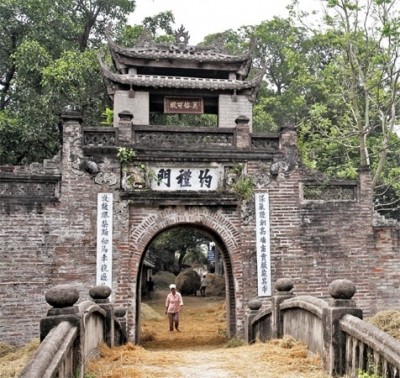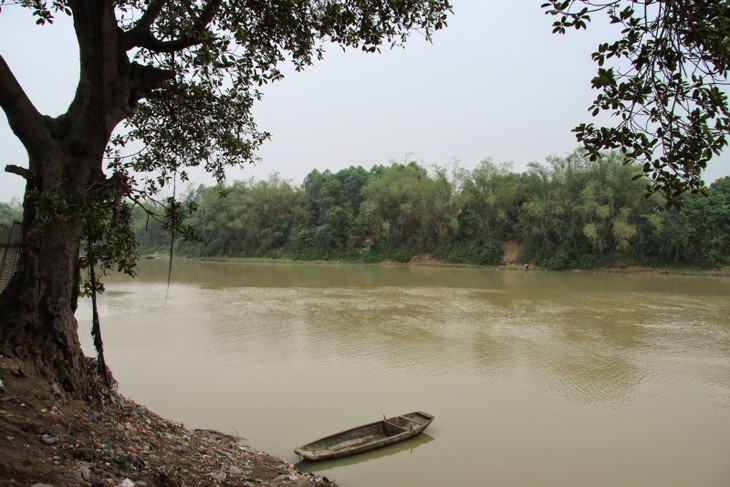(VOVworld)- A village with a bamboo hedge, a century old banyan tree, a communal house, and a river wharf is where many Vietnamese people are born and grow up. Village life has a cozy climate. Everyone lives with their parents, surrounded by sympathetic neighbors. Each village has its cultural traditions, customs, and traditional crafts.
 |
| Entrance gate to Uoc Le village on the outskirts of Hanoi. (Photo: vietnamnet.vn) |
Now, with Vietnam on its way to full international integration, our new “Village life” segment will help our listeners and readers better understand how Vietnam’s rural populations have built on their ancestor’s achievements and adapted their strengths to modern pressures to create village life as it today. A report by To Tuan on Vietnamese villages and what creates their distinctive look will be the first in this new series.
The name of a village is often linked to Vietnam’s history of national construction and defense. Archeological research shows that villages began to take shape as wet rice cultivation came into being.
As people migrated from the mountains to the lowlands to do farming, they came to realize the importance of cooperation in reclaiming land, digging irrigation canals, and building dykes to prevent floods –work that couldn’t be done by one individual or one family.
Work collaboration resulted in small groups of families living together in hamlets which combined to form villages. The establishment of such communities was based on a need for unity to fight invaders, build irrigation works, and control flooding. A nation was formed from many villages. Hamlets and villages, then, are the smallest administrative units of a society.
The traditional village structure includes a village dyke, a village gate, a communal house, a banyan tree, a river wharf, and an inner village space containing houses, gardens, and ponds.

A river wharf
|
Doctor Tran Huu Son, a folklore researcher, told VOV that the first impression of a village is the gate and bamboo hedge surrounding it.
According to Son, “A village gate demarcates the territory it claims from the outside world. The village gate and the bamboo hedge surrounding it form a strong fortress against invaders. The village gate was frequently decorated with parallel sentences promoting the village’s beauty and status and the virtues of the villagers. Wherever Vietnamese go, they always remember their village gate.”
Other architectural works include the main road which usually leads to a communal house where the village’s tutelary god is worshipped. Situated at the center of the village, the communal house is the most typically spiritual architectural work and the pride of the village.
Doctor Dinh Hong Hai of National University Hanoi said: “There’s a saying: “Each village beats its own drum and worships its own deity”. The drum or deity represents the uniqueness, distinctiveness, status, and character that distinguish one village from all others. Thus the village communal house is always built to give an impression of strength.”
A communal house is the center of village activities, including major social events, festivals, and cultural activities. In the past, a well and a banyan tree held spiritual significance. If the village well was a mirror of the village’s peaceful atmosphere, the old banyan tree was a witness to the village’s ups and downs through generations of villagers. The architectural beauty of communal houses and pagodas often suggests lance heads rising into the sky, symbolizing the villagers’ aspirations.
The structure of the ancient villages of the Viet people who originally settled in the Red River Delta is highly continuous. Beyond each green bamboo hedge are roads leading to other hamlets connected by inner lanes so that villagers can go home any number of ways. This structure is convenient for farming and supports social institutions. Each village has a charter which regulates ethics, lifestyle, and tells villagers what they should and should not do.
Village structure and customs have created a peaceful countryside ambience, reminding the people of their origin.